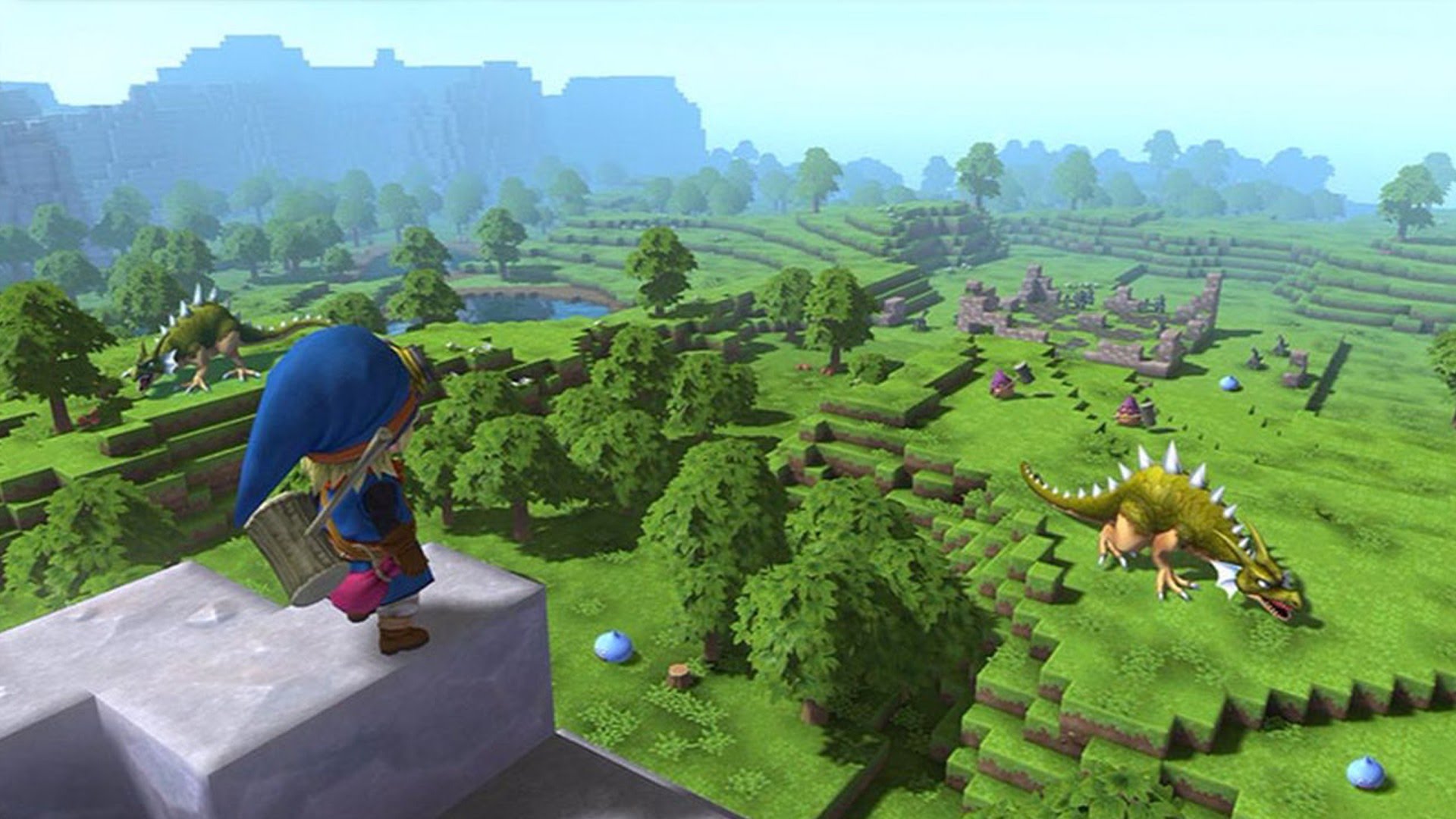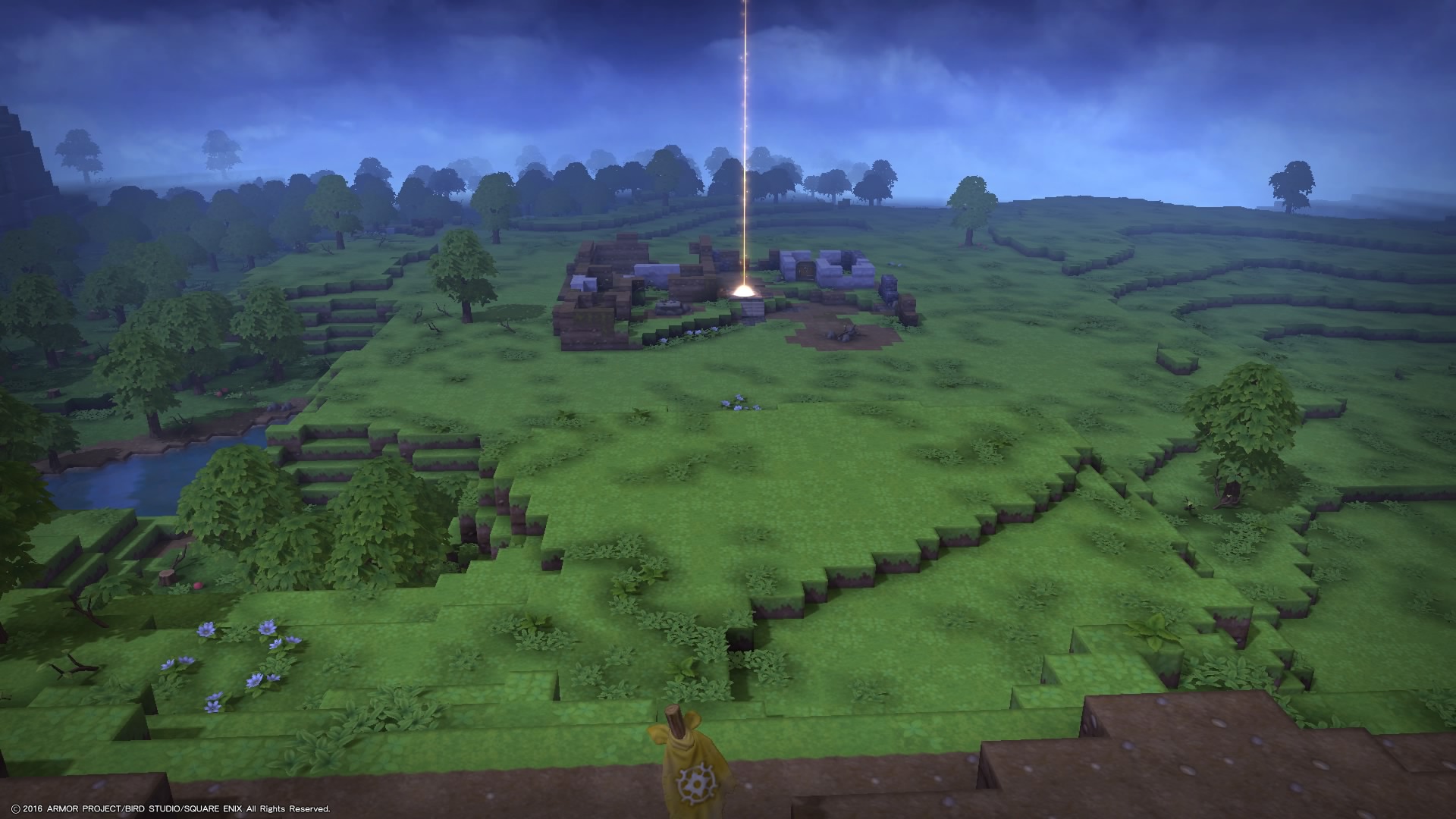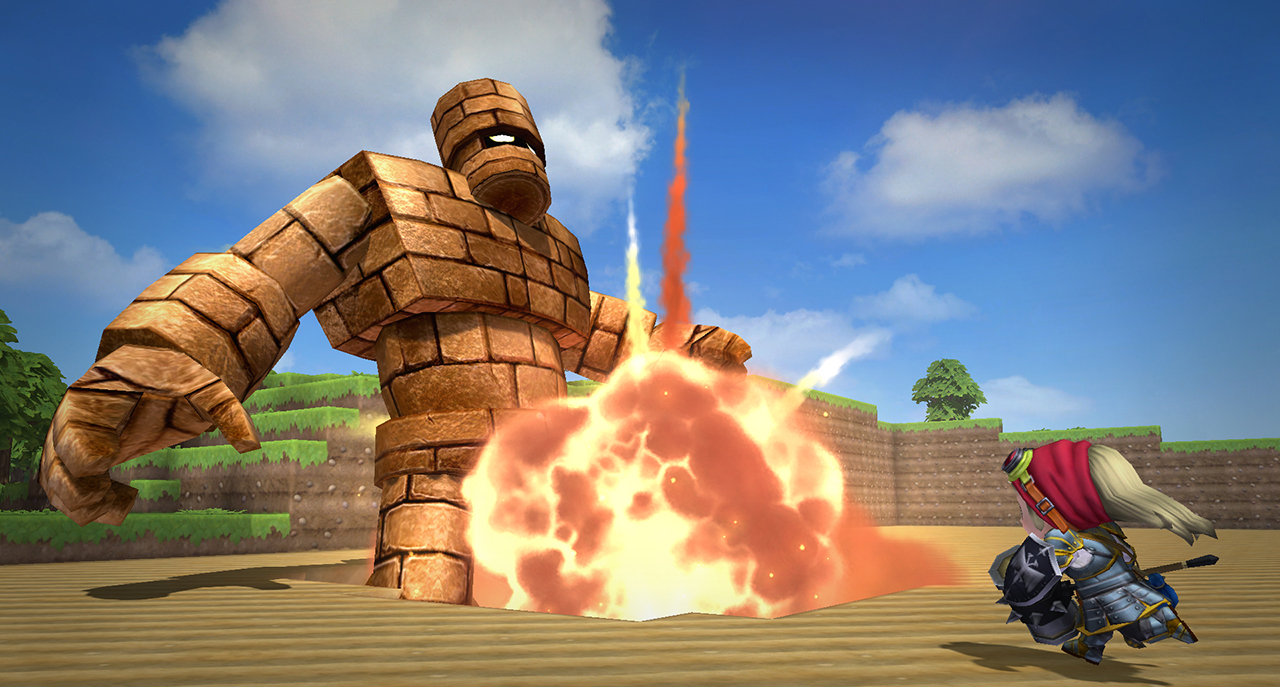
The Minecraft gameplay loop has a very unique charm that draws players to it in droves, players that then stay for hundreds of gameplay hours. But there are many that would argue that there’s one thing that’s wrong with it. While the free-form creation is great to flex your creative muscles, after a while, the aimlessness of it all makes you start losing interest. Dragon Quest Builders, which first launched in 2016 and has now made its way over to the Nintendo Switch, is Square Enix’s answer to that. It provides the same level of freedom to create and mine to the player, but manages to do so within a concrete structure that shapes the way you play in interesting ways.
Builders is set in Alefgard, the world the very first Dragon Quest title was set it. In Builders’ alternate version of Alefgard though, at the end of the first game, rather than saving Alefgard, the hero ended up siding with the Dragonlord, leaving the world in darkness. You’re reborn as the fabled Builder into this ruinous version of the world, and your job is to rebuild it piece by piece, while also fighting to save its citizens. In and of itself, it works as a serviceable setup. It’s characterized by the classic brand of Dragon Quest humour, such as people constantly making remarks about how no one in the world but the Builder seems to be capable of building anything, and callbacks and references make it all feel like a very authentic spinoff.
"Dragon Quest Builders provides the same level of freedom to create and mine to the player as Minecraft, but manages to do so within a concrete structure that shapes the way you play in interesting ways."
It’s serviceable, but, as you might expect, nothing special. But then again, that’s because it doesn’t need to be. The narrative’s strength lies not in its writing, but in the structure it provides to what’s really the game’s best aspect- building. Dragon Quest Builders employs a LEGO-style of building and crafting that players of Minecraft will be very familiar with. What makes it work really well is that it’s easy to pick up (helped by the game’s concise and instructive tutorials), and then how far you take it is really only up to your imagination. The building aspects keep getting more complex as the game progresses, asking you to construct different kinds of rooms and structures, while also throwing in various kinds of materials that can be used, and the game keeps throwing new objectives your way, some uniquely creative, and others run-of-the-mill.
Rather than the aimless meandering and construction of Minecraft, Builders’ story demands that the player work toward certain objectives. There are four areas in the game, through which you progress in a linear fashion, and while each area is completely open for the player to explore, Builders cleverly makes sure that your focus remains squarely on the “city” in each area. The game constantly has you in a loop of further developing your town further and bringing more people in, and then to complete more building-related quests on their behest, which further contributes to the development of your town.
Alefgard in Builders is a dangerous place though, being under the rule of the Dragonlord and all that, and the monsters that infest it (which include enough Dragon Quest classics – such as Slimes, of course – to please even the most veteran fans of the series), often attack your town. At such junctures, you have to defend your town against waves of enemies in tower defence sections, where you’re constantly in charge of defending your town from all four sides with the help of traps and support units. These sections inject a great deal of variety into the game, breaking up the mining-combat-building loop nicely.
"The game constantly has you in a loop of further developing your town further and bringing more people in, and then to complete more building-related quests on their behest, which further contributes to the development of your town."
The most vital thing this does, though, is it anchors you to your town. You’re constantly making sure that proper defences have been built, that you have your traps and the towers in the proper positions. Losing some of your town’s progress in these encounters can hurt, while your town’s strength is also instrumental in the chapter-ending boss fights, which means that while you’re building and developing your town, your ultimate objective is always to make it stronger and more defendable. As such, building in Dragon Quest Builders always feels very strategic.
The one issue that lets this down, however, is that every time you complete a chapter and move on to the next of the four areas, you lose all your progress. Having to start from scratch and building another town from the ground up can feel a little jarring, and the sudden sense of progression certainly stings a bit. There is an alternative to this though- for those who would rather opt for a more leisurely, relaxed style of building that allows the creative juices to flow, without the threat of a looming attack or losing your progress or having to adhere to a structure, Dragon Quest Builders also offers a free play mode, which is great for Minecraft-style sandbox play.
There’s a lot to do in each of these four areas besides rebuilding your towns, though. Each of the four areas in Dragon Quest Builders is a large and open map, and exploring these maps is a lot of fun. Alefgard is full of monsters to slay, caves to explore, and treasures to collect, and putting the main quest on hold to do these things is never a bad decision. There are a lot of areas that are crawling with overpowered enemies or reward you with rare loot that are completely optional for the player to tackle. However, sooner or later you will want to get back to building, since exploration can’t always hold the player’s interest for that long.
"Alefgard is full of monsters to slay, caves to explore, and treasures to collect, and putting the main quest on hold to do these things is never a bad decision."
That’s down to the combat. Combat in Dragon Quest Builders is very simplistic, essentially boiling down to very basic actions like attacking and dodging, and though you can upgrade some of your attacks, it never really goes beyond that. Sure, some might argue that combat is really ancillary to Builders, with its focus being somewhere else entirely, but it’s got enough weightage in the experience to start feeling dull and monotonous after a while. What also doesn’t help is that after a good couple dozen hours or so, there are times when the game starts feeling a little repetitive (which is compounded by the fact that you lose all your progress at the end of every chapter). Though it’s never repetitive enough to make you want to stop playing, it’s not entirely ignorable either.
Dragon Quest Builders manages to infuse the charm and personality of Dragon Quest with the addictiveness of Minecraft excellently. It runs very well on the Switch, and the lower 720p resolution isn’t all that noticeable either, thanks to the game’s reliance on a colourful art style rather than a more photorealistic approach, while the system’s added hook of portability also makes it an inherently more convenient and accessible experience. If you’re looking for a game to sink dozens of hours into on the Switch, look no further than Dragon Quest Builders.
This game was reviewed on the Nintendo Switch.
Addictive; Building is easy to grasp and extremely enjoyable; Building your town has a sense of strategy involved; Tower defence sections are a lot of fun; Loads to do; Exploration is a joy.
Loss of progression at the end of each chapter; Simplistic combat; Can get a little repetitive at times.



















